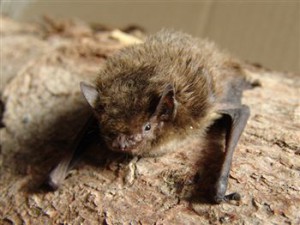
RARE bats have been found breeding in Ayrshire for the first time.
Tiny Leisler’s bats, which grow to just seven centimetres, have been found roosting in Culzean Country Park.
And excited experts have found evidence that the species is breeding.
The survey, run by bat experts John Haddow and Stuart Spray, also identified the rarely recorded Nathusius’ pipistrelle in the area.
Experts found seven of Scotland’s nine bat species during the two week study but said a further two species could be present which, if confirmed, would mean all known Scottish bat species in one location.
Unbelievable
Deirdre Mackinnon, Senior Ranger the park said: “We all had an amazing fortnight. Catching the Nathusius’ pipistrelle on the first night was unbelievable.
“Following that we were so excited to discover the Leisler’s bats and then to have the unique experience of following them during the night, recording their feeding patterns and finding their roosts.
“It was well worth the late nights, early mornings and all-night sessions. This new bat information confirms that Culzean is indeed a very special place for wildlife.”
The survey was funded by the Heritage Lottery Fund, which sent out the Scottish Wildlife Trust’s Developing Ecological Surveying Skills (DESS) and volunteer bat surveyors out to catch the mammals using specialist equipment.
Achievement

Commenting, DESS Programme Leader Claudia Gebhardt said: “Finding these rare bats in Ayrshire is a real achievement. Before this discovery, nobody knew if these species actually occurred in this part of Scotland.
“Using mist nets and an acoustic lure, we managed to attract the high flying Leisler’s bats down to our level.
“We radio tagged the three Leisler’s bats caught and followed their nocturnal movements over the following nights.
“The success of the project is due to the hard work of John Haddow, who survived on only a little sleep for two weeks, and also to the invaluable help of volunteers from all the different organisations.
“Finding breeding Leisler’s bats is a groundbreaking result on its own, but we have also gained great insights into the behaviour of Leisler’s bats.
“The success of this project was largely due to current technology which is still developing and will in the future further advance our understanding of Scottish Bats.
“Any increase in knowledge is important and will assist in conservation management of these protected species.”

